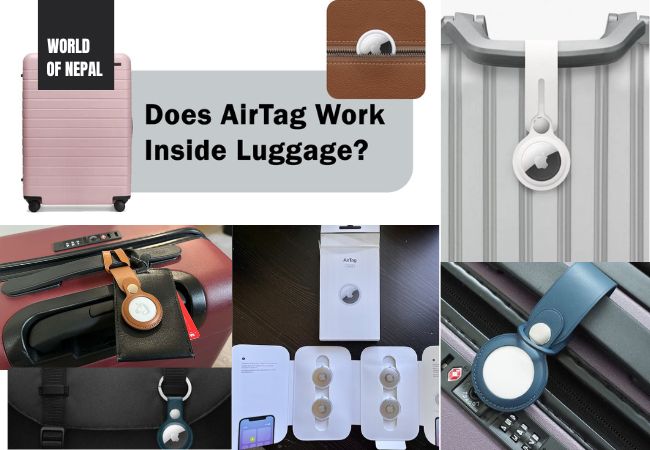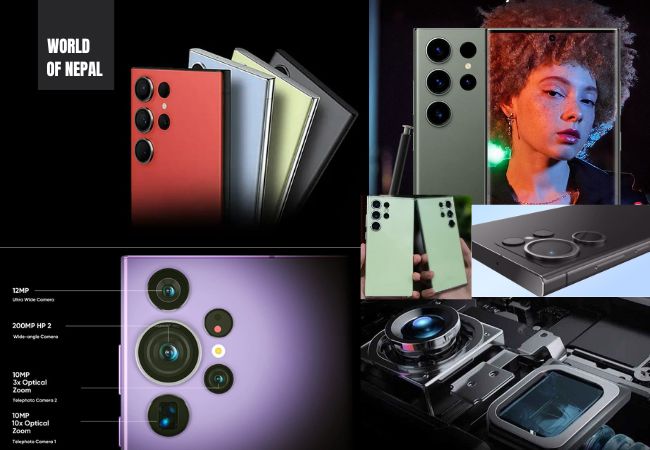Does AirTag Work Inside Luggage? [Updated 2024]

Apple AirTag is an efficient electronic device that makes it effortless to locate keys, purses, and luggage, among other items.
The experience of traveling with luggage can induce tension due to the continuous risk of misplacing or having things stolen. This is particularly true for air passengers, whose luggage’s safety and location throughout the journey may be a source of concern. An instance of this is when Apple AirTags are utilized.
Apple AirTags provide precise location information for the cargo by establishing Bluetooth connections with the next Apple devices.
Note: “Many users may wonder “Does AirTag work inside luggage?” This is a ubiquitous question for many users. The answer is yes, the AirTag does work inside the luggage.”
AirTag ensures you can consistently locate your luggage regardless of location by transmitting and receiving Bluetooth signals while it is protected in a suitcase. Using Apple’s Find My application, you can monitor the location of your cargo regardless of its hiding place.
Is It Legal to Put AirTag Inside Your Luggage? [Updated 2024]
Now that many individuals are aware that the Apple AirTag can help track the location of their luggage and other assets, they may question whether or not it is permissible to carry the device inside their luggage. It might come in under specific regulatory provisions due to its electronic nature.
Due to international regulations governing personal electronic devices, German airline Lufthansa initially prohibited the use of Apple AirTag in checked baggage in early October 2022. However, the prohibition was eventually lifted.
As specified by the Federal Aviation Administration (FAA), checked baggage is permitted to carry AirTags. Tracking devices containing 0.3 grams or less of lithium metal cells are permitted in checked baggage, per the FAA. For instance, the Apple AirTag, which contains 0.1 grams of lithium, falls within this category.
Should You Put an AirTag Inside Your Luggage?
Does AirTag Work Inside Luggage? To optimize its security, it is advisable to transport it in your luggage. It is potentially hazardous to leave your Apple AirTag outside of your luggage, as it could become mistakenly removed from it while being handled at the airport.
The AirTag is ideal for travel due to its compact dimensions and strong design. It can be discreetly affixed to one’s luggage, providing continuous assurance that the item is easily accessible.
Furthermore, when you put the AirTags into the luggage, they are not only protected but also hidden from potential thieves. Additionally, the operation of AirTags remains unchanged when they are hidden within luggage, thus making them devoid of any performance drawbacks.
AirTags Outside or Inside Luggage?
There are no integrated openings or attachments for belts or other accessories on the Apple AirTags. However, Apple offers a variety of accessories for enhancing the functionality and aesthetics of the AirTag, which can be purchased separately. Included among these accessories are purses, key chains, and loops.
Although these accessories provide a more advanced and practical means of securing the AirTags outside of luggage, they also elevate the potential for unplanned removal or theft. Air tags may become separate from the accessory and go missing during severe handling or travel. Additionally, since the AirTags are more visible and accessible when placed outside the luggage, the risk of theft is increased.
Due to the previously mentioned dangers, it is advisable to store the Apple AirTags within the luggage as a measure of safety. Nonetheless, acquiring AirTag accessories may serve additional functions, such as securing the device to a purse or keychain.
How to Use AirTags to Track Your Luggage?
It is crucial to bear in mind, when contemplating the purchase of an AirTag, that this tracking device is exclusively made for integration with Apple products, including the iPhone. One might consider considering alternative options available in the market if they utilize Android, such as the ones provided by Tile, which exhibit comparable functionality across iOS and Android devices.
AirTag is entirely established with the Apple ecosystem; it is compatible with Apple’s virtual assistant Siri and can be located using the “Find My” function. Although Tile offers a mobile application and can be discovered by other Tile users, the extent of integration is not similar. Therefore, AirTag is the superior option when compared to Tile or any other tracking device if you own an iPhone.
AirTags are equipped with a function known as Focused Finding. Through the utilization of Ultra Wideband technology, the Precision Finding function can precisely identify the whereabouts of a nearby AirTag.
It is essential to note, however, that this technology may not be accessible to all individuals due to its lack of support in certain regions and countries. Moreover, compatibility with the Precision Finding feature is restricted to iPhone 11 and subsequent models running iOS 14.5 or later.
Connecting AirTag with your iPhone – Does AirTag Work Inside Luggage?
After acquiring the AirTag, pairing it with your iPhone is required.
Verify that two-factor authentication is active and that Bluetooth and Find My Device are both configured. Additionally, ensure that your iPhone has a Wi-Fi or cellular data connection to the internet.
In order to commence, remove the battery connector from the AirTag and listen for the welcome sound. When you bring the AirTag near your iPhone, an on-screen configuration prompt will appear.
Complete setting it up by giving it a name by following the on-screen instructions. After the AirTag has been configured, place it inside your luggage.
Locating Your Luggage – Does AirTag Work Inside Luggage?
The Find My app can be utilized to track down lost baggage. It is important to note that AirTags do not transmit real-time location updates. Utilizing Apple’s Find My network, it updates its current location only every few minutes and only when other Apple devices are in the vicinity.
Launch the Find My application, navigate to the Items tab, and use the map to locate your AirTag. The time and location of the item’s last known location will be displayed in the inventory of items at the bottom of the screen.
To examine an item in greater detail, tap it from the list. If you are unable to locate your suspected luggage but are certain it is nearby, press the Play Sound icon to have your AirTag emit a chime.
You will see a Find button if you use an iPhone with Ultra Wideband, any iPhone 11 model, or later, and AirTag is within Bluetooth range. In the event that this is not the case, a Direction icon will appear, activating Maps to direct you to the last known location of your luggage.
To obtain guidance in locating your luggage accurately, click Find. Then, slightly relocate your iPhone throughout the area. When your iPhone establishes a connection with the AirTag, a directional arrow and an approximation of the distance will appear on the screen. Once it has been located, touch the X to return.
If you are still unable to locate your luggage, you can use the Find My app to place it in Lost Mode and receive assistance recovering it. Simply raise your hand and locate Lost Mode then, tap Enable.
By activating Lost Mode, you will be duly notified whenever your AirTag enters the range of your iPhone or when the Find My network updates its location. Your AirTag will remain linked to your Apple ID unless you manually disconnect the two-way connection.
In Lost Mode, if someone discovers your luggage, they can view your contact information by tapping the AirTag with an iPhone or any other NFC-capable device.
To complete configuring Lost Mode, select Continue and proceed with the on-screen instructions. Following these steps, you can effortlessly monitor and locate your luggage using AirTag.
Tech: Samsung AC Price in Nepal – Air Conditioners [Updated January 2024]
Rojan Adhikari is a tech enthusiast and an experienced Gadgets and Electronics Content Writer. He has already worked for multiple technology news media as a gadgets content writer and editor. Moreover, he is a Computer Science student.





